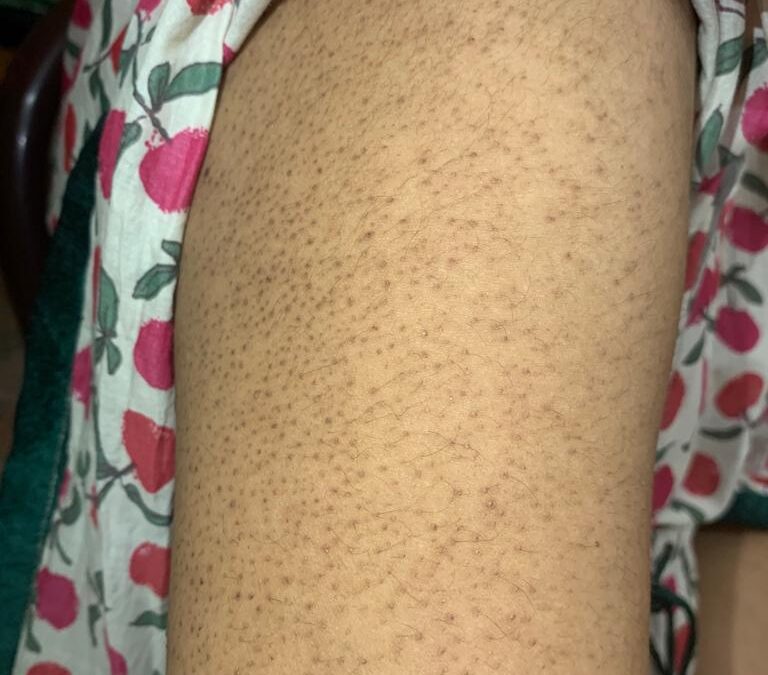INTRODUCTION
It is a condition where certain areas of the skin become dry and rough, with small bumps appearing in that area, resembling pimples.
Most common sites affected – Upper arms, thighs
Other sites affected – Forearms, legs, cheeks, or anywhere in the body having hair follicles
It is a non-contagious condition.
WHO CAN DEVELOP (EPIDEMIOLOGY)
Keratosis pilaris is most commonly seen in children and teenagers. And it appears to resolve on it’s own as one’s age progresses to mid 20s and 30.
SYMPTOMS
In Keratosis pilaris, no pain or itching is associated with the affected area.
However, the patient may face cosmetic problems :-
- Most notably skin pigmentation (change in skin color)
- The affected area may turn black, brown or red (in fair skinned people) depending on the skin color of the patient.
- Affected area has tiny bumps of the same color, resembling pimples.
CAUSE
In Keratosis Pilaris, keratin – a hair protein, accumulates over immature hair follicles and dead skin cells, which appears as tiny bumps over the skin.
The exact cause of accumulation of keratin is not known.
RISK FACTORS
- Genetic – It is commonly seen in people whose family members were affected with the same condition.
- Environmental – It appears more during dry seasons like winter, when the skin is prone to dry up.
- Age – children and teenagers are mostly affected
- Obesity
- It can be associated with other skin conditions such as Atopic dermatitis, Icthyosis etc. and other dry skin
DIAGNOSIS
Keratosis pilaris is a condition which can be diagnosed by any dermatologist by simple clinical examination.
It usually does not require any additional tests or investigations.
TREATMENT
There’s no permanent cure for this condition yet.
However many options for symptomatic cure are available, which restores the appearance of the skin :-
- Home remedies
- Use warm water for bathing.
- Short time baths – Because bathing for longer duration can cause skin dryness.
- Use moisturizer after bath.
- Physical exfoliator, like scrub can be effective in removing the keratin plugs.
- Avoid tight fitting dress.
- Use humidifier at home – to keep your skin cool and moist.
- Creams
- Keratinolytic agents (which breaks down keratin) such as
- Urea
- Lactic acid
- Salicylic acid
- Glycolic acid
- Retinoic acid cream (Trentinoin) etc., containing creams may be used for treatment.
- Keratinolytic agents (which breaks down keratin) such as
*Caution / Contraindications (Note to patients)
- Avoid rubbing these creams in excess, which may cause burning, itching & redness over the skin.
- Retinoid creams are strong keratinolytics, but they should be avoided in pregnant or lactating mothers and those who are planning for pregnancy, because retinol is a teratogenic. Hence it can affect the baby.
Consult a Dermatologist for personalized details of these below therapies
3. Chemical peeling
4. Microdermabrasion
5. Laser treatment





